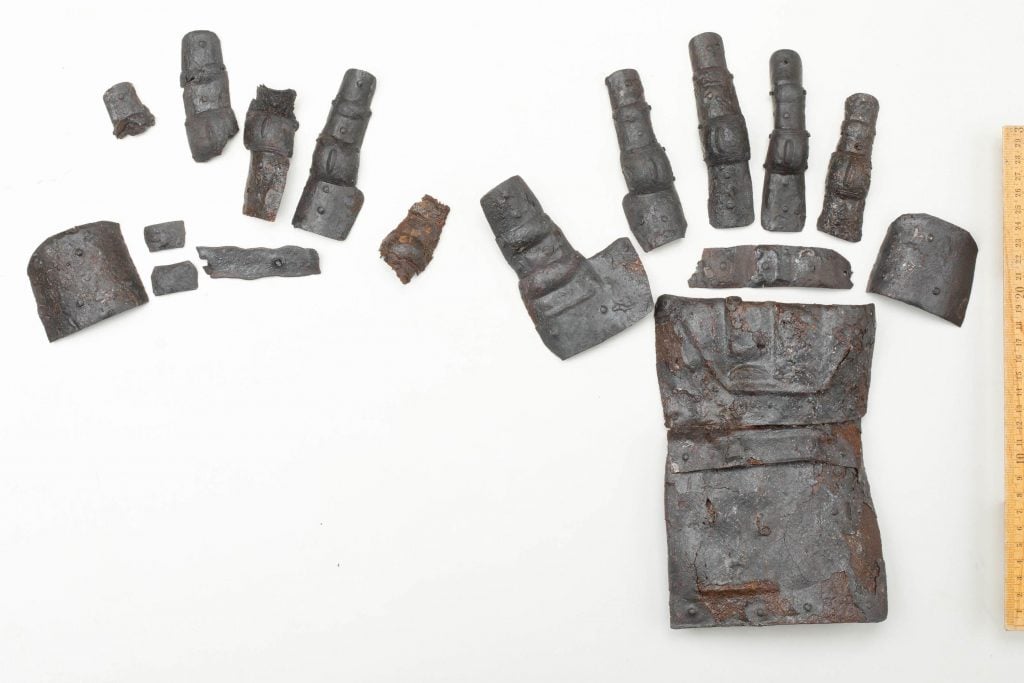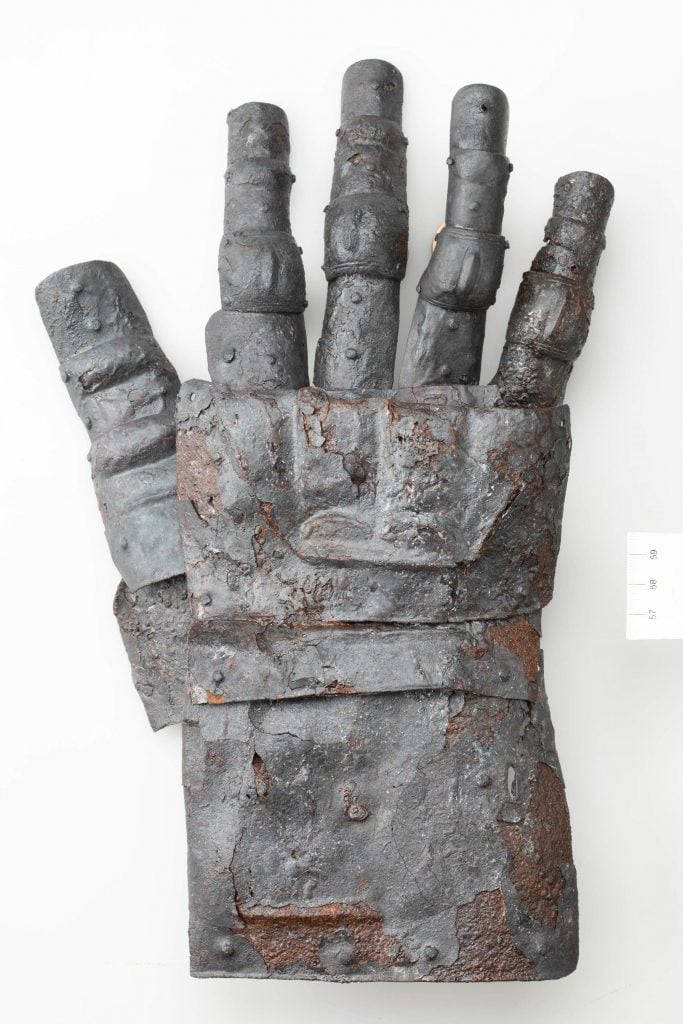Archaeology & History
A ‘Sensational’ Medieval Gauntlet Is Found Near a Castle in Switzerland
The piece of armor is so well-preserved that its components still fit together.

The piece of armor is so well-preserved that its components still fit together.

Artnet News

Archaeologists digging near Kyburg Castle in Switzerland, a heritage site rich in history that stretches back nearly a millennium, have found a rare, well-preserved piece of armor that has been buried for some 600 years.
The excavation was carried out in 2021, when demolition work near the castle was believed to endanger a neighboring medieval town. A team from the canton of Zürich arranged a rescue mission to preserve the archaeological remains in the locality. Their dig led them to a weaving cellar, which burned down in the 14th century, where they found 50 metal objects—such as hammers, pliers, keys, and knives—indicating that forging was once carried out on the site.
But the most astonishing find was an armored gauntlet, so completely preserved that its fragments could still fit together. Now known as the Kyburg gauntlet, it once fit a right hand, with four-fold finger gloves featuring separate iron plates riveted together on the side, allowing flexibility. The individual components were further attached on the inside to leather or textile material, which was sewn into a textile finger glove. Some portions of a left-hand gauntlet were also found.

The medieval gauntlet found near Kyburg Castle in Switzerland. Photo: Canton of Zürich.
While such gauntlets have been recovered in the past, most date back to the 15th century. Examples from the 14th century, including the Kyburg relic, are exceedingly rare. In fact, only five other armored gloves from the era have been recovered—none as complete and detailed as the Kyburg relic.
As Lorena Burkhardt, who led the excavation, said in a statement: “The discovery is sensational due to its age and condition.”
Due to the rarity of the discovery, the archaeologists have yet to suss out the gauntlet’s wearer (a knight, however, is not out of the question). But they believe that the artifact’s design and craftsmanship make it an expensive item worn by high-status individual.
“What is certain is that the gloves were made to a high standard and the purchase of such pieces of armor was correspondingly expensive,” Burkhardt told the New York Times. “It is therefore likely that the gloves were intended for a noble or other high-ranking person.”
A copy of the Kyburg gauntlet will go on permanent display at Kyburg Castle from March 29, alongside a reconstruction of what the piece of armor might have once looked like. The original find will be displayed at a special three-week exhibition at the castle from September 7.